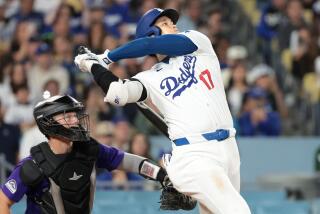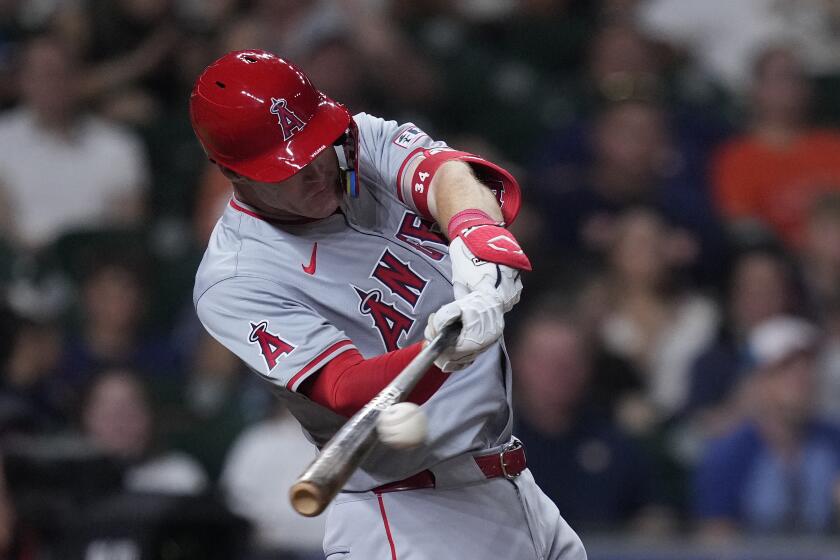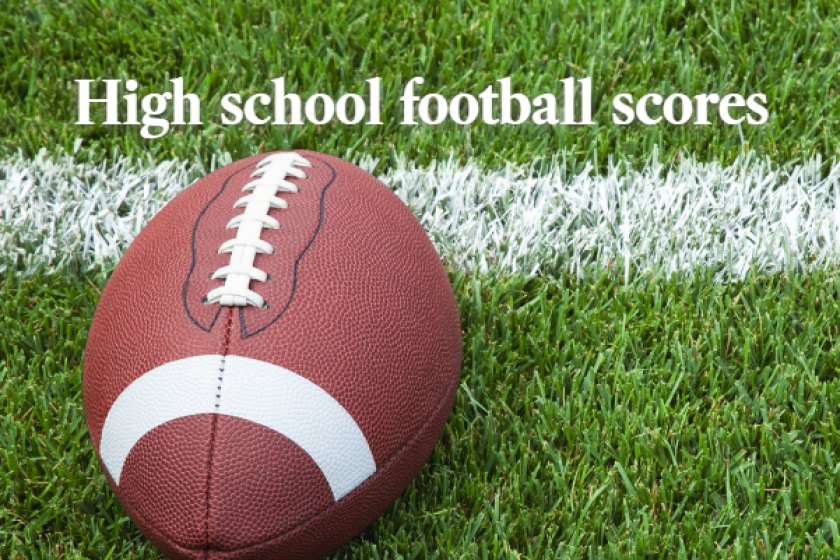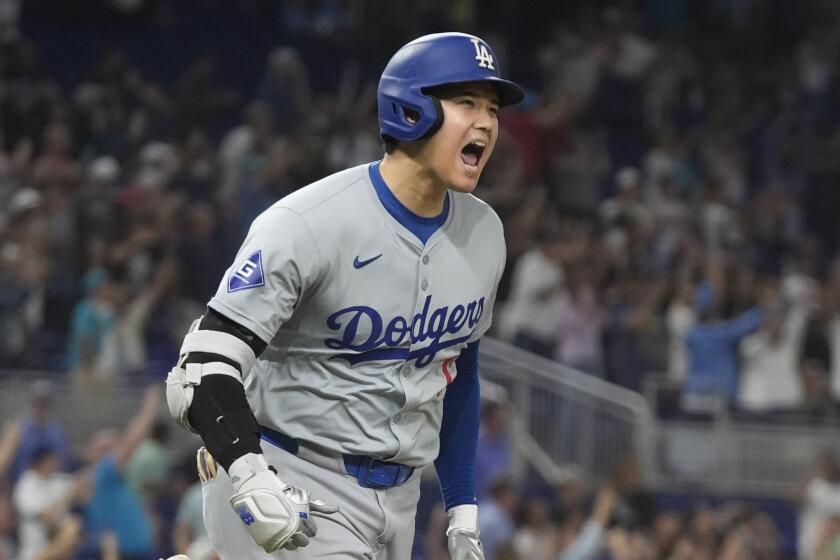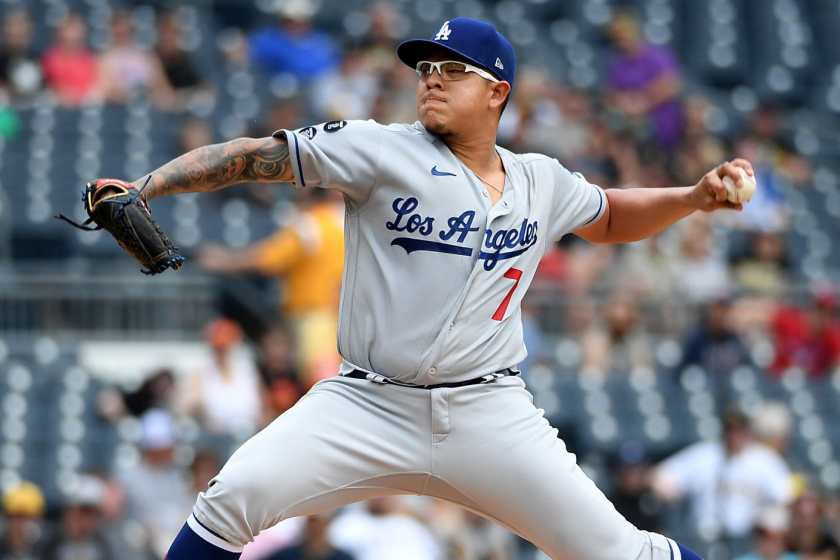Renegades Won Loyal Fans in Inner City
True to their names, the Raiders came to Los Angeles eight years ago as renegades, a swaggering, blustering team made up of outcasts and ruffians.
In a city known for style, glamour and poolside chic, the act was a tough sell. The sports market was dominated by the blue-blooded Dodgers and Magic Johnson’s “Showtime” Lakers. The Raiders were an alien lot, thugs, blue-collar guys, hard-bitten pugilists.
But the Raiders managed to carve out a following. The announcement on Monday of the team’s intention to return to Oakland drew cries of disappointment from many parts of town. Mostly, the disappointment was centered in the inner city, in neighborhoods surrounding the Coliseum, in portions of East and South-Central Los Angeles where the Raiders stood for toughness and defiance.
“The Raiders are tops--they’ve always been tops,” said Mario Bernal, owner of Bernal’s Sporting Goods on busy Whittier Boulevard in East L.A.
Tough, gritty East Los Angeles was one place where Raiders’ caps and jackets sold abundantly. Bernal said he sold hundreds of the black-and-silver caps a year, mostly the less-expensive $4.25 version. Latino residents rallied around the Raiders far more than they did around the Rams, who preceded them.
“I don’t know exactly what it is,” Bernal said. “In my area, all the people of Mexican descent, the young people, they talk about the Raiders. When they’re talking about the Raiders, they feel proud.”
According to a Los Angeles Times Poll conducted earlier this year, the typical Raiders fan was politically middle-of-the-road, a relatively well-paid college graduate. Thirty-eight percent of the Raiders’ followers called themselves white-collar, compared to 33% who held blue-collar jobs. A significant number were in management.
At the same time, 18% of Raiders fans were black and 14% Latino, compared with 6% black and 14% Latino for the Dodgers and 14% black and 11% Latino for the Lakers.
Raiders caps have long been the most popular athletic headwear of Los Angeles street gangs, most notably the Crips.
“Loud, noisy . . . mucho macho” is how Jack Abbott described the typical Raiders fan.
Abbott, the manager at Julie’s Trojan Barrel Bar & Grill, a venerable sports hangout near the Coliseum, has seen the pregame and postgame crowds dwindle by 40% since the team first invaded the city.
The blame falls largely on the losing seasons the team has endured in recent years, according to Abbott. Another factor, he said, may be ticket prices that have reached $30 a seat, more than some of the team’s inner-city followers could afford.
“For four people to go, that’s $100-plus,” Abbott said.
Like many businesses surrounding the Coliseum, Julie’s expects to suffer.
“We went through it with the Rams (leaving) and we were three years without a professional football team,” Abbott remembered. “We ended up with the Raiders and everybody happy. Now it’s all gloom and doom again.”
Also affected would be an untold number of sandwich shops and liquor stores, as well as the game-day entrepreneurs who turned their own small driveways and front yards into pay-parking lots, erecting huge white plywood signs.
Residents of the Coliseum area were often hired as vendors, selling peanuts, ice cream and beer. Youth centers such as Challengers Boys and Girls Club on South Vermont Avenue occasionally received batches of 20 or 30 free tickets from the Raiders, enabling underprivileged children and teen-agers to go to games.
On Sundays, the cheering of the football crowds could be heard--a distant inspiration--by the youngsters hanging around the gym at Challengers, said counselor Michael Lopez. Last year, on separate days, Raiders stars Marcus Allen and Bo Jackson visited the club to talk to its children and teen-agers.
Jackson, promoting Nike products, talked, signed autographs and chose winners in a poster contest, Lopez said. The crowd, mostly black and Latino youngsters, numbered 300 or 400.
“Oh man, I’ll tell you, we had a tremendous number of kids,” Lopez said. “You get somebody like that here . . . and the kids really get excited. They want to be like him.”
Bill Robertson, former chairman of the Los Angeles Coliseum Commission, whose split with Raiders owner Al Davis prompted plans for the team’s move, decried the impact the proposed move would have on a community that, more than anything, needs a lift in morale.
“I’m frustrated and disappointed,” Robertson said. “I can’t pinpoint what it means in dollars. (But) it was that type of ballclub that had an appeal to middle-class people, to the working people and minorities. (Until recently) they had a Hispanic coach, Tom Flores. They had a lot of blacks. They had the right image.”
Robertson criticized the media--in particular The Times--for a reluctance to embrace the Raiders when they arrived in Los Angeles. The city’s fans, however, were willing to support the franchise--at least while it was winning.
“The whole damn story is, that vocal support . . . out there is for winners,” Robertson said.
Although attendance at games fell dramatically after the Raiders last made it to the Super Bowl--they won the 1984 game--members of the eclectic following sometimes drove considerable distances to root for the maverick cast of athletes.
A hard-core group of 40 or 45 fans has made a tradition of having game-day brunch at Sausalito South, a restaurant and bar in Manhattan Beach, and boarding a bus to go see the Raiders play. The group, mostly aerospace workers, computer operators and real estate salespeople with season tickets, were bound together by a love for “good, hard, aggressive football,” said Michael Bloss, general manager of the restaurant.
On days of big games, sometimes two buses were necessary, he said.
The Raiders, who practice in nearby El Segundo, repaid the loyalty by coming around at lunch, Bloss said. On Monday nights, former star Lyle Alzado and, more recently, Rod Martin would host a noisy, crowded session in the bar watching “Monday Night Football.”
“If they move, we’ll certainly miss them,” Bloss said, putting the blame not on the Raiders but on what he described as the deteriorated condition of the Coliseum.
“If they want me to go to the Coliseum, they need to fix it up,” he said. “It is not an enjoyable place to walk through a (pedestrian) tunnel--it smells like a urinal. If there was a decent stadium, you’d probably get a better turnout.”
Lance Keller of Murray’s Tickets, a 53-year-old ticket brokerage firm, said even the Rams struggled to draw fans to Los Angeles during losing seasons. “I just don’t think L.A. is that big a football town,” he said.
But to those who wanted it to be, like Los Angeles City Councilman Robert Farrell, the likely move stands as a difficult blow to take.
“The Raiders are a class act,” said Farrell, whose inner-city district includes the Coliseum. “They are made to order for the people. We’re very pleased they were here. They brought a lot of excitement. Whatever they were, they were our team.”
THROUGH THE YEARS: QUOTABLES
“The right thing to do is to admit we don’t have the money (for the Raiders).”--Then-Los Angeles County Supervisor Baxter Ward, describing at a May 6, 1980, meeting his opposition to a $5-million loan offered to lure Al Davis to Los Angeles.
“After all the effort to get the Raiders in the Coliseum, to see Al Davis sign an agreement with Irwindale upsets me to no end.”--Los Angeles County Supervisor Ed Edelman, Aug. 20, 1987.
“Let him go. L.A.’s the place, and if he doesn’t want to be here, get out of town. . . . I think we ought to call his bluff.”--Los Angeles City Councilman Nate Holden, reacting on Aug. 20, 1987, to Davis’ announcement he was moving the team to Irwindale.
“We learned early on that the only way to deal with Davis is straight up. No smoke. No mirrors. We think we’ve negotiated a deal that is fair to both sides.”--Xavier Hermosillo, Irwindale spokesman, Aug. 20, 1987.
“If the Raiders leave, they leave. It doesn’t matter.”--David Bort, former manager of Tyson’s Choice ticket agency on Martin Luther King Boulevard behind the Coliseum, reacting on Aug. 21, 1987, to news the team would move to Irwindale.
“He throws manure at you until it piles so high you throw in the towel.”--Unidentified Coliseum Commission member, describing Davis’ negotiating style on Aug. 24, 1987.
“It’s not over. It ain’t over till the ink’s dry and the deal’s done. But if they leave, the Coliseum and Sports Arena will find new tenants. The Raiders are an absolutely great client, but that’s it. Nothing more.” --Los Angeles City Councilman Robert Farrell, reacting on Aug. 21, 1987, to announcement that Raiders planned to move to Irwindale.
“If Davis left Oakland, where he had a good financial situation, how do we know he won’t leave Los Angeles someday?”--City Council President John Ferraro, Sept. 7, 1987.
“No one has been more guilty of bad faith and unfair dealings than the Coliseum Commission.”--Raiders official Irv Kaze, Sept. 30, 1987.
“We’re committed to Irwindale. We’re going to Irwindale.”--Kaze, Dec. 4, 1987.
“Davis seems to have a history of out-negotiating whoever is on the other side. . . . He was successful in that with Irwindale. He got $10 million in his pants pocket from them before the financing for that deal was arranged.”--Marshall Grossman, attorney representing the Los Angeles Coliseum Commission, Aug. 13, 1989.
“We want to keep the Raiders but we don’t want to be raped.”--Then-Los Angeles Deputy Mayor Mike Gage, Aug. 13, 1989.
“Now Oakland will become the sports capital of the world.”--Oakland Mayor Lionel Wilson, March 12, 1990.
“I’d like to congratulate Oakland and I wish the Raiders the best of luck.”--Los Angeles Coliseum Commission President Richard Riordan, March 12, 1990.
More to Read
Go beyond the scoreboard
Get the latest on L.A.'s teams in the daily Sports Report newsletter.
You may occasionally receive promotional content from the Los Angeles Times.
